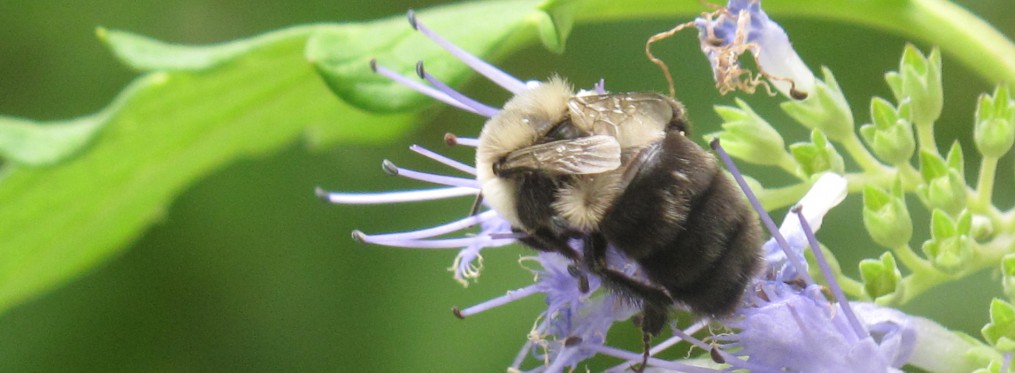This is the new support system for the espalier apple trees. Remember the first time you met the espalier apple trees? A lot has happened since that time. First off, we noticed that one of the apple trees, Malus ‘Spartan’, did not fully come back this year from the hard winter we experienced. Although one side of the tree grew leaves, the other side had died. We then made the painful decision to take the tree out and replace it with a new one. However, when we went back to the nursery to buy a replacement, the nursery said the tree was guaranteed for a year and we received a free replacement. How cool!! So meet our new tree, Malus ‘Gravenstein’.
Gravenstein is a variety of apple native to Gråsten in South Jutland, Denmark. The variety was discovered in 1669 as a chance seedling, although there is some evidence that the variety originated in Italy and traveled north. The Gravenstein was introduced to western North America in the early 19th century, perhaps by Russian fur traders, who are said to have planted a tree at Fort Ross in 1811. The Gravenstein apple has a sweet, tart flavor. It is picked in July and August and is heavily used as a cooking apple, especially for apple sauce and apple cider. It does not keep well, so it is available only in season. In addition, their short stems and variable ripening times make harvesting and selling difficult. The skin is a delicately waxy yellow-green with crimson spots and reddish lines, but the apple may also occur in a classically red variation. Our older tree, Malus ‘Liberty’, is proud to meet its younger cousin.
The other change in the espalier apple tree grove is that we began to realize that Malus ‘Liberty’ had branches that were beginning to bend. If you look at the picture above, you will see the bottom limb is bent or crooked. In order to fix this, we worked with a landscaper to embed two granite posts on either side of the trees. Although not completed yet, we will be running wire from one post to the other in three separate rows and tie each of the limbs to the wires for support. During the summer, we will tighten the ties that will move the limbs closer and closer to the wire and therefore making each limb straighter and straighter. The granite posts also give the area quite an architectural look and feel.
So a lot has been happening in the espalier apple tree grove….if you can call two trees a grove. We noticed that Malus ‘Liberty’ needed a little leaf trim so that will need to be done. After that, we will wait it out and hopefully get a few apples from the trees later in the Fall. Let’s keep our fingers crossed. Do you have any fruit trees in your garden and how do you care for them?





An apple grove! I’m a bit jealous so I’ll torture you with the only espaliering story I know: Last year Katherine and I went to Scotland and outside one distillery I pointed to a tree growing up the side of the building.
Me: Look at that tree. I can’t believe it does that.
Katherine: Yeah, they do that it’s some French term, espaliering. I read it in Bridget Jones.
Me: No, I think it just grows like that.
Katherine: No, it’s called espaliering
…… redundancies deleted….
Katherine to tour guide: Hey do you grow the trees like that? Bemused Tour guide: Yes, it’s called espaliering.
Hi Rufus’. Thanks for the story. It’s a good one. You must be like me and every once in a while say something wrong to humor those less intelligent than us. : ) Hopefully, I’ll get an apple or two this year. You never know. Next time you won’t have to travel to Scotland to look at an espalier…you can just drive to Connecticut instead. Come back and visit soon.
While I do do that, this tree looked more like a vine! Thanks for humoring me. My wife uses that technique far more than I do. Not the espaliering the comic effect one. I’ll be back soon!
Thanks!! See you soon.
Lovely idea, the granite posts. I will be following your garden work. 🙂 Have a wonderful day!